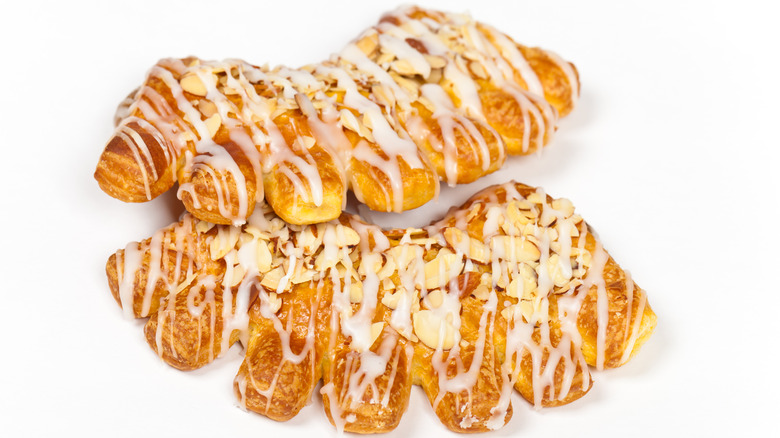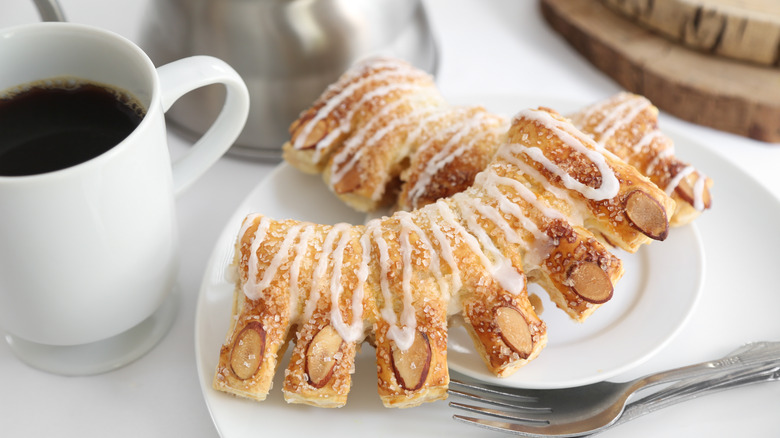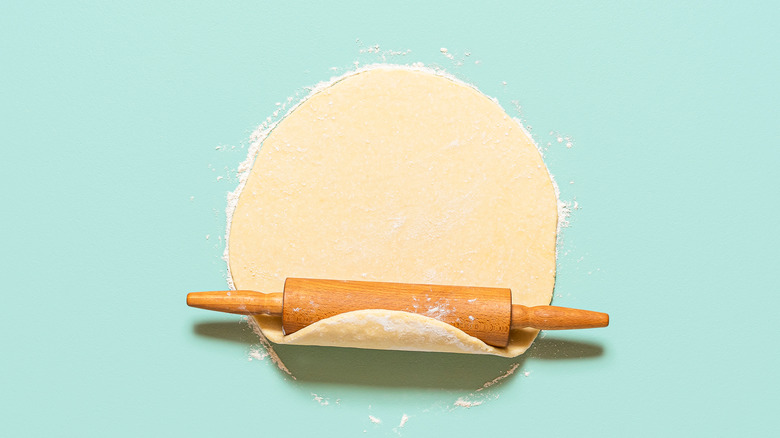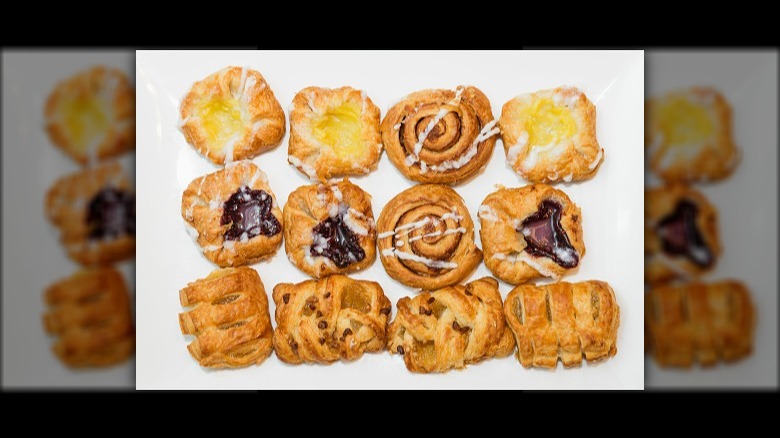What Actually Is A Bear Claw Pastry?
One of the larger pastries in the case, the bear claw will satiate the hunger of even a grizzly bear, although these treats are definitely made for humans and not the furry creatures. Resembling a bear claw (of course, hence the name), the pastry was created during the mid-1920s, per Bake From Scratch. The secret to making the proper bear claw shape is to section the dough so as it rises and bakes, the sections become spread out and create a claw appearance. The bear claw shape is about more than just being cute. According to The Commons Café, called "Kamime" in Denmark, the bear claw evidently symbolizes wealth. While created in the U.S. and not Denmark, the pastry is in the style of a Danish pastry with its multiple layers of dough, according to Just Fun Facts. In addition, during the period that the bear claw was created, Danishes were widely popular in America thanks to Danish immigrants and Danish pastries being served at the wedding of President Woodrow Wilson in 1915.
The pastries are often filled with an "almond flour-based marzipan filling," says Bake From Scratch. While the filling is certainly a key component of the pastry, its "buttery dough" that is also delicate is an essential part of a bear claw, according to Cookist. Adding a touch of something pretty to the substantial bear claw pastry is a topping of glaze or sugar and slivered almonds.
Tender and flavorful dough
Described as having a "sweet almond filling," bear claws are made with a tender and flavorful dough when following a recipe from Red Star Yeast. The dough is made from flour, unsalted butter, yeast, half and half, sugar, salt, and egg.
There are three parts in a bear claw: the dough; the filling; and the topping. For the filling, Cookist recommends using almond paste versus marzipan because of its texture. Cookist says that almond paste tends to be softer than the latter, which in turn makes it easier to work with. Directions for making the filling from Red Star Yeast calls for softened unsalted butter, confectioners' sugar, almond paste, egg whites, flour, and almond flour or finely chopped almonds.
Some alternatives for making a bear claw, per Cookist, is substituting puff pastry for made-from-scratch dough to save time. Another way to take some of the work out of making the pastry is by using Pillsbury homestyle biscuits. Pillsbury also suggests using creamy almond butter to make "Grizzly Bear Claws." While almond filling is the traditional bear claw flavor, Cookist says feel free to get creative and use other flavored fillings.
How to make a bear claw
Making a bear claw pastry involves several steps of rolling out the dough and folding it. Once the flavorful yeast dough is made for a bear claw, it is rolled out and folded into thirds to create a 12-inch by 7-inch rectangle, describes Red Star Yeast. Next, it needs to be placed on a baking sheet that has been covered with parchment paper before being covered and refrigerated for four hours.
To make the almond filling, the softened butter and confectioners' sugar is combined in the mixer, per Red Star Yeast. Then the almond paste is added to create a smooth filling. Finally, the egg whites, all-purpose flour, and almond flour or finely chopped almonds are incorporated into the dough. The paste should be refrigerated until ready to use. According to Red Star Yeast, either a small or large version of the pastry can be made from the dough.
After being placed on a baking sheet, Cookist says to sprinkle sugar and cut almonds on top of the formed pastries. They should be baked at 375 degrees for up to 15 minutes to get them golden brown. After the pastries have been removed from the oven and allowed to cool, glaze can be added, if desired.
A type of Danish pastry
Bear claws are more than just another tasty pastry, according to The Commons Café, which says the pastry could be considered a hybrid of a croissant and a doughnut with a sweet filling, although it can be savory with an appropriate filling. The bear claw is often categorized as a Danish pastry, which True Scandinavia describes as a dough made with yeast and possessing a flaky texture. There are many different kinds of Danish pastries, including the iconic spandauer, which generally is circular in shape with a filling of custard cream or jam.
Traditionally, a Danish is made with a dough that incorporates plenty of butter, eggs, and yeast (via Delighted Cooking). Seasonings can also be added to the dough with some of the more popular additions being cinnamon, allspice, and cardamon. A Danish is also made with multiple layers of dough that have a butter coating that is then shaped into circles, squares, or another shape.
Bread & Butter Project sums up the bear claw as having the "rugged" look of a Danish with a "sweet nutty filling." So, while the bear claw may bear similarities to other pastries, it is not only uniquely shaped, it has its own quintessential flavors.



